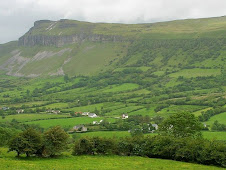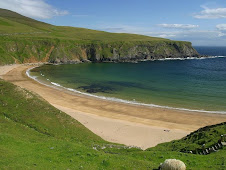There was a massive fall of 25,000 in the number of people employed in Ireland in the twelve months to August this year, according to the latest Quarterly National Household Survey from the Central Statistics Office (CSO).
This is the first annual fall in employment recorded by the CSO since 1991. The figures also show that unemployment increased by 60% during the same period.
It is the first time for 25 years that this combination of a sharp fall in employment as well as a sharp rise in unemployment has been recorded in official figures.
Men are doing particularly poorly, with the number of employed males down by 32,000 over the year, while women are faring much better, with a gain of 7,000 in employment during the year.
This shows once again and very clearly that the whole structure of the Irish labour market is changing and shifting from a male to a female dominance. There are three reasons for that:
1) The fact that most women are still earning less than a male equivalent doing the same job. Thus it is cheaper for companies to employ women.
2) The massive increase in low-skilled service jobs, which are predominantly filled with women, while there is a clear decline in manufacturing and other skilled jobs, usually held by men.
3) The ever more aggressive implication of so-called 'equality', which over-proportionally favours women and makes it increasingly more difficult for men to get a fair treatment and a proper job.
The collapse in construction has been one of the biggest drivers of the trend, with the numbers of those engaged in house building down by 40,000 compared with this time last year.
Other areas of construction expanded a little, providing some cushion for builders with a gain of 14,000 jobs on infrastructure and commercial building projects.
Employment in manufacturing is down 9,400, while the contraction in the 'leisure industry' has made another 5,400 people redundant in hotels and restaurants over the 12-month period.
It appears that the job losses are more severe for Irish nationals, as the overall employment of foreign workers is unchanged from last year.
However, the flow of non-Irish nationals into the country has slowed down to just one-sixth of the level of last year. This is not surprising. We were only attractive for migrant workers - most of them from eastern Europe - as long as there were more jobs than we could fill ourselves and more money than anywhere else. In fact, I expect that a good number of Poles will return home for the Christmas and New Year celebrations and not come back, because while Ireland is now in rapid decline, Poland shows the first signs of economic flourish and is tipped to be the next boom country in Europe.
The Emerald Islander
This is the first annual fall in employment recorded by the CSO since 1991. The figures also show that unemployment increased by 60% during the same period.
It is the first time for 25 years that this combination of a sharp fall in employment as well as a sharp rise in unemployment has been recorded in official figures.
Men are doing particularly poorly, with the number of employed males down by 32,000 over the year, while women are faring much better, with a gain of 7,000 in employment during the year.
This shows once again and very clearly that the whole structure of the Irish labour market is changing and shifting from a male to a female dominance. There are three reasons for that:
1) The fact that most women are still earning less than a male equivalent doing the same job. Thus it is cheaper for companies to employ women.
2) The massive increase in low-skilled service jobs, which are predominantly filled with women, while there is a clear decline in manufacturing and other skilled jobs, usually held by men.
3) The ever more aggressive implication of so-called 'equality', which over-proportionally favours women and makes it increasingly more difficult for men to get a fair treatment and a proper job.
The collapse in construction has been one of the biggest drivers of the trend, with the numbers of those engaged in house building down by 40,000 compared with this time last year.
Other areas of construction expanded a little, providing some cushion for builders with a gain of 14,000 jobs on infrastructure and commercial building projects.
Employment in manufacturing is down 9,400, while the contraction in the 'leisure industry' has made another 5,400 people redundant in hotels and restaurants over the 12-month period.
It appears that the job losses are more severe for Irish nationals, as the overall employment of foreign workers is unchanged from last year.
However, the flow of non-Irish nationals into the country has slowed down to just one-sixth of the level of last year. This is not surprising. We were only attractive for migrant workers - most of them from eastern Europe - as long as there were more jobs than we could fill ourselves and more money than anywhere else. In fact, I expect that a good number of Poles will return home for the Christmas and New Year celebrations and not come back, because while Ireland is now in rapid decline, Poland shows the first signs of economic flourish and is tipped to be the next boom country in Europe.
The Emerald Islander







































No comments:
Post a Comment